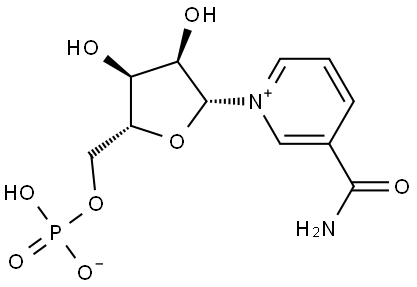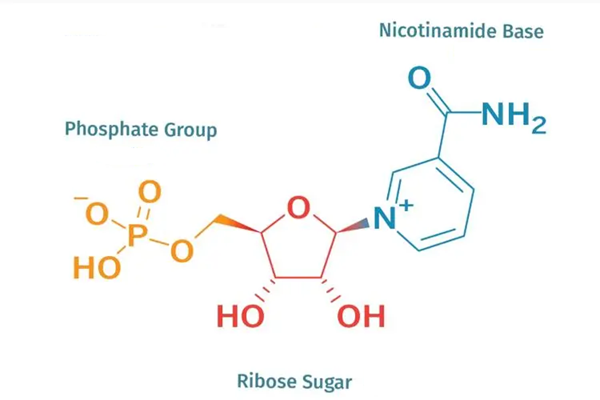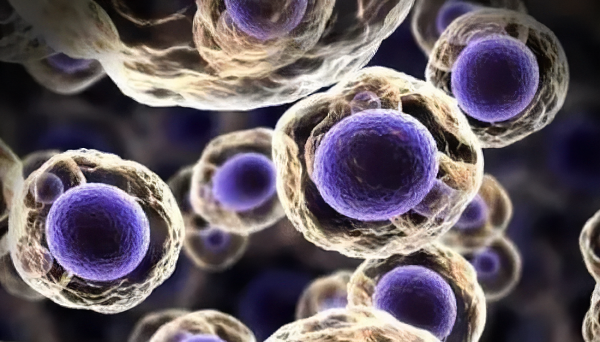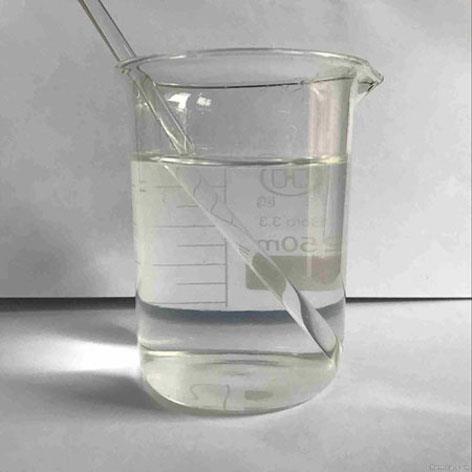β-nicotinamide mononucleotide: Pharmacodynamics, Functions and Preparation
Indication
β-nicotinamide mononucleotide (β-NMN) is a nucleotide derived from ribose and nicotinamide[1]. It plays an important role in the production of NAD+, which is a coenzyme involved in various biological processes, including DNA repair, gene expression, and energy metabolism. NAD+ plays an important role in the health of the human body, participating in thousands of biocatalytic reactions, and its total star content gradually decreases/decreases with age[2]. β-NMN is found naturally in some foods, such as broccoli, avocado, and cabbage, but it is also sold as a dietary supplement. β-NMN, also known as antiaging drugs, has become a hot research topic in the fields of health products, food, and other fields. The existing domestic market capacity of β-NMN is about 10 tons, and it is in a period of rapid growth. It is likely to reach a scale of over 100 tons in the future. β-NMN is gradually being understood and studied by researchers. β-NMN is the most important intermediate for the transformation of nicotinamide riboside NR into NAD particles in the body.

Figure 1 molecular formula of β-nicotinamide mononucleotide
Pharmacodynamics
The pharmacodynamics of β-nicotinamide mononucleotide involve its conversion to NAD+ within cells, which can activate various signaling pathways involved in cellular processes such as DNA repair, mitochondrial function, and inflammation. Studies have shown that β-NMN supplementation can increase NAD+ levels in various tissues and organs, including the brain, liver, muscle, and adipose tissue. In preclinical studies, β-NMN has been shown to improve metabolic function, insulin sensitivity, and cardiovascular health, and may also have neuroprotective effects. However, further research is needed to fully understand the pharmacodynamics of β-NMN and its potential therapeutic applications in humans.
Mechanism of action
The mechanism of action of NMN involves its ability to increase NAD+ levels in cells, which can activate various signaling pathways involved in cellular processes.NMN is absorbed into cells and converted to nicotinamide riboside (NR) by the enzyme nicotinamide phosphoribosyltransferase (NAMPT). NR is then converted to NAD+ by a series of enzymatic reactions. By increasing NAD+ levels, NMN can activate various enzymes called sirtuins, which are involved in regulating cellular processes such as aging, metabolism, and stress response.In addition to activating sirtuins, NMN can also activate other signaling pathways that are involved in cellular processes such as DNA repair, mitochondrial function, and inflammation. These pathways include the AMP-activated protein kinase (AMPK) pathway, which regulates cellular energy production and metabolism, and the peroxisome proliferator-activated receptor gamma coactivator 1-alpha (PGC1-α) pathway, which regulates mitochondrial biogenesis and function.
Functions
The functions of β-nicotinamide mononucleotide are shown in the following five points. Anti-aging: Increased NAD+ levels[3] have been linked to improved cellular function and longevity, and some studies suggest that β-NMN supplementation may slow down the aging process in mice and humans. Metabolic disorders: β-NMN supplementation has been shown to improve glucose tolerance, insulin sensitivity, and lipid metabolism in animal models of metabolic disorders, such as obesity and type 2 diabetes. Cardiovascular health: β-NMN has been shown to reduce oxidative stress and inflammation in blood vessels, which may improve cardiovascular health. Neuroprotection: Some research suggests that β-NMN may have a neuroprotective effect by improving mitochondrial function and reducing oxidative stress in the brain. Exercise performance: Animal studies have shown that β-NMN supplementation can improve exercise endurance and muscle function, possibly by increasing NAD+ levels in skeletal muscle[4].
Preparation
Chemical synthesis route
The chemical synthesis of β-NMN started early, mainly with nicotinamide and tribenzoyl groups β-D-ribose, tetraacetylribose, and other raw materials are synthesized through key steps such as glycosylation, phosphorylation, and ammonolysis. There are several main synthesis routes depending on the starting materials and protective groups. The disadvantages of chemical synthesis routes are that individual raw materials are expensive and difficult to obtain, as well as one or more disadvantages such as long journey, difficult separation, high cost, isomer separation, multiple solvents, and large environmental investment, which seriously restrict β-Mass production and application of β-NMN. In principle, it is not recommended for China to apply for new food raw materials prepared by chemical processes β-Biosynthesis is the best choice for the chemical synthesis route of β-NMN. Preparation of ketolated protected nicotinamide ribose by phosphorylation and deprotection β-NMN. Under argon atmosphere, nicotinamide ribose first reacts with 2,2-dimethoxypropane to protect the radicals at positions 3 and 4, then phosphorylates with phosphorus oxychloride/triethyl phosphate, and finally removes the protective group with trichloroacetic acid (TFA) or HCl to obtain the target product. The method has short steps and high yields, with a total yield of about 69%. The disadvantage is that raw materials are expensive, and intermediates require column chromatography for purification, resulting in high separation and high cost[5].

Figure 2 Preparation of β-nicotinamide mononucleotide
Biosynthetic route
The biosynthesis of β-NMN includes fermentation and enzymatic methods. Due to its own reasons, the substrate products of fermentation method are very easy to be consumed and utilized by the bacteria themselves, which is difficult to accumulate in large quantities, and has low production efficiency, which is not conducive to industrial production. Some researchers proposed a method of using genetically engineered Escherichia coli containing enzymes related to β-NMN metabolism to produce β-NMN by fermentation. Using this strain, the β-NMN yield was 15.42 mg/L[6]. In addition, some researchers designed a whole-cell biosynthesis pathway of Escherichia coli to synthesize β-NMN. Although no additional cofactors were required, the β-NMN yield was only 1.5 mmol L[7] (about 0.5 g/L), which was extremely low and did not have industrial value. It is worth noting that some scholars have constructed a genetically engineered recombinant Escherichia coli that can ingest glucose and nicotinamide, containing nicotinic acid transporter Nia P, nicotinamide nucleoside transporter Pun C, and NAMPT alcohol from different species, which can ultimately achieve β-NMN production of 6.79 g/L[8], which is the highest yield reported by existing enzymatic methods. The cost of producing β-NMN by this method needs to be confirmed in industry. Overall, It is also a very promising biological conversion method that will help reduce the production cost of β-NMN in the future.
Safety
With the in-depth exploration of the application value of β-NMN, the safety of β-NMN has also received great attention[9]. More and more clinical trials related to β-NMN have been approved, and β-NMN has been used to treat various diseases. Long-term (12 months) oral administration of β-NMN in mice (with a dose of 300 mg/kg) has good safety and tolerance. In the first phase I clinical trial of oral β-NMN[10], it has been shown that β-NMN is well tolerated in humans and does not cause side effects such as flushing, stomach, and intestinal discomfort; The phase II clinical trial showed that elderly men continued to take β-NMN (250 mgld) for 6 or 12 weeks without any adverse reactions, and all hematological, liver, and renal function indicators were normal; The results of the phase III clinical trial showed that the cocktail package consisting of NAD+precursors and several other substances could increase the recovery speed of COVID-19 patients by 40%; Multiple clinical results have further demonstrated that β-NMN is a safe drug suitable for human use. In 2020, the Ministry of Health, Labor, and Welfare of Japan approved β-NMN for food production. In 2022, the National Drug Administration also successively approved a number of β-NMN cosmetics new raw materials for filing. The release of clinical trial results of β-NMN and the opening of relevant policies have caused widespread attention to the efficient preparation of β-NMN, and the realization of large-scale production of β-NMN is imminent.
References
[1] Verdin E. NAD+ in aging, metabolism, and neurodegeneration[J].Science,2015,50(6265):1208-1213.
[2] Kathryn F, Mills, Shohei Yoshida, Liana R, et al. Long-Term Administration of Nicotinamide Mononucleotide Mitigates Age-Associated Physiological Decline in Mice[J]. Cell Metabolism,2016,24(6).
[3] Takanobu Y, Jaemin B, Peiyong Z, et al. Nicotinamide mononucleotide, an intermediate of NAD+ synthesis,protects the heart from ischemia and repercussion[J]. Plos One, 2014,9(6):98972.
[4] De Picciotto N E, Gano L B, Johnson L C. Nicotinamide mononucleotide supplementation reverses vascular dysfunction and oxidative stress with aging in mice[J].Aging Cell, 2016,15(3):522-530.
[5] Velasquez J E, Green P R, Wos J A.Method for preparing nicotinamide riboside.US, 20170121746[P].2017-05-04.
[6] Marinesu G C, Popescu R G, Stoian G,et al. β-nicotinamide mononucleotide (β-NMN) production in Escherichia Coli[J].Sci Rep,2018,8:12278.
[7] Black W B, Aspacio D, Bever D, et al. Metabolic engineering of Escherichia coli for optimized biosynthesis ofnicotinamide mononucleotide,a noncanonical redox co-factor[J].Microb Cell Fact,2020,19:150.
[8] Shoji S, Yamaji T, Makino H, et al. Metabolic design for selective production of nicotinamide mononucleotide from glucose and nicotinamide[J]. In Press, Journalpre-proof. 2020.11.008.
[9] Poddar SK, Sifat AE, Haque S, et al.Nicotinamide mononucleotide:exploration of diverse therapeutic applications of a potential molecule[J].Biomolecules,2019,9(1):34.
[10] Irie Jinagakie, Fujitamnakayah, Mitsuishi, et al. Effect of oral administration of nicotinamide mononucleotide on clinical parameters and nicotinamide metabolite levels in healthy Japanese men[J].Endocrine Journal,2020,67(2):153-160.
);Related articles And Qustion
Lastest Price from β-Nicotinamide Mononucleotide manufacturers

US $280.00-220.00/kg2024-05-20
- CAS:
- 1094-61-7
- Min. Order:
- 1kg
- Purity:
- 99% up Kosher,Halal
- Supply Ability:
- 20 tons
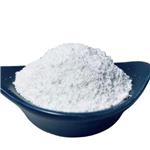
US $1.00/kg2024-05-20
- CAS:
- 1094-61-7
- Min. Order:
- 1kg
- Purity:
- 99%
- Supply Ability:
- 20 tons
